These phylogenetic spindle diagrams were plotted using my R package paleoDiv (https://doi.org/10.32614/CRAN.package.paleoDiv), with some occasional light edits in Inkscape, and are based on occurrence and taxonomic data from the paleobiology database. Keep in mind that these datasets are largely unedited (except for very glaring inaccuracies), and reflect a biased and incomplete fossil (and database) record, so take care to interpret them accordingly. Feel free to make use of these charts in your presentations or lectures, or to install paleoDiv yourself and give it a try!
Looking for a particular diagram (e.g., a particular selection of taxa or a focus on a specific time period) not already on this page? You can familiarize yourself with how to use paleoDiv to make your own, or request a chart (if I find the time I’ll be happy to generate it for you).
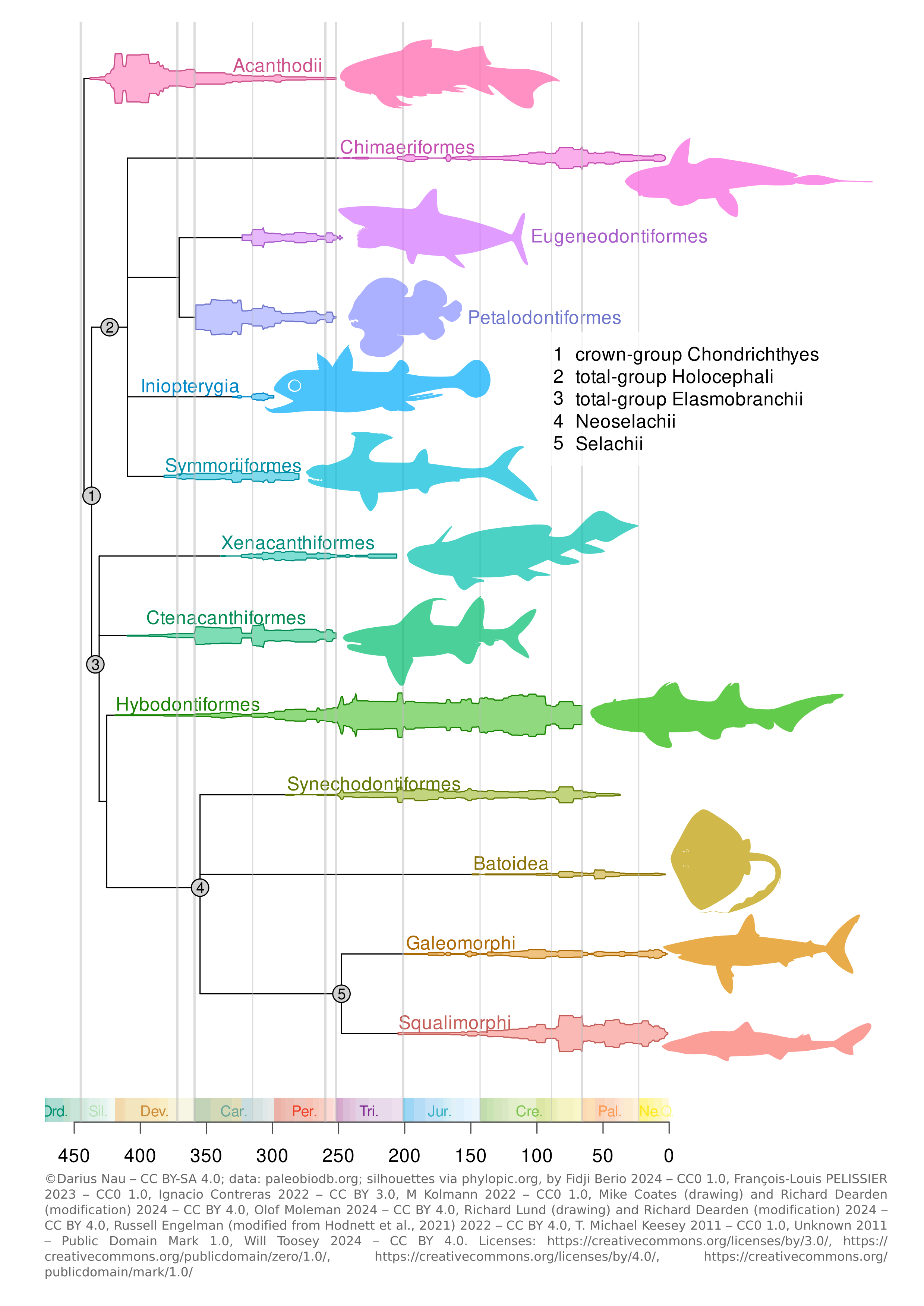
Diversity trends among major groups of Chondrichthyans. Also available as a poster (PDF, A4).
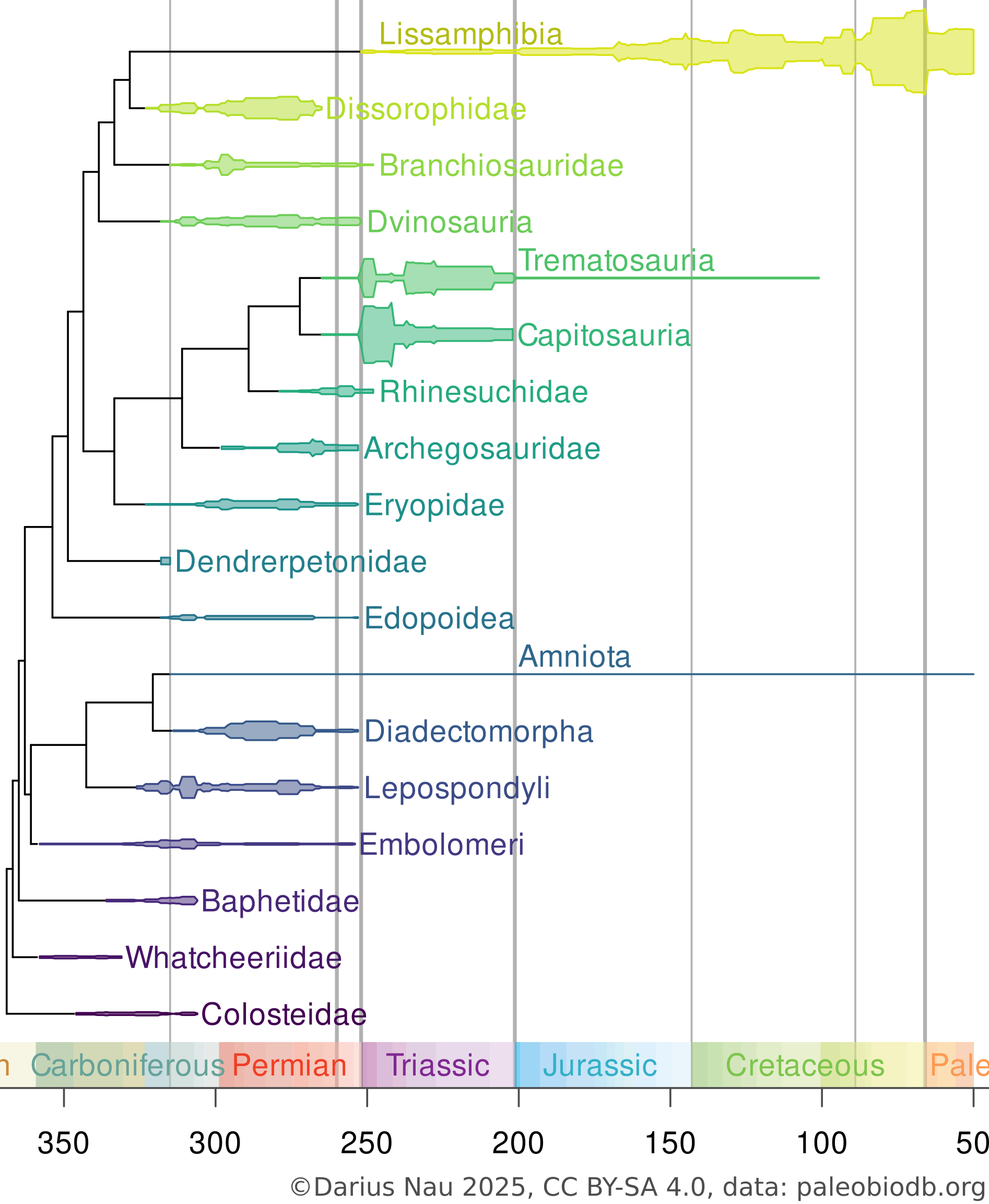
Diversity trends among Temnospondyli and other non-amniote Tetrapods in the late Paleozoic and Mesozoic
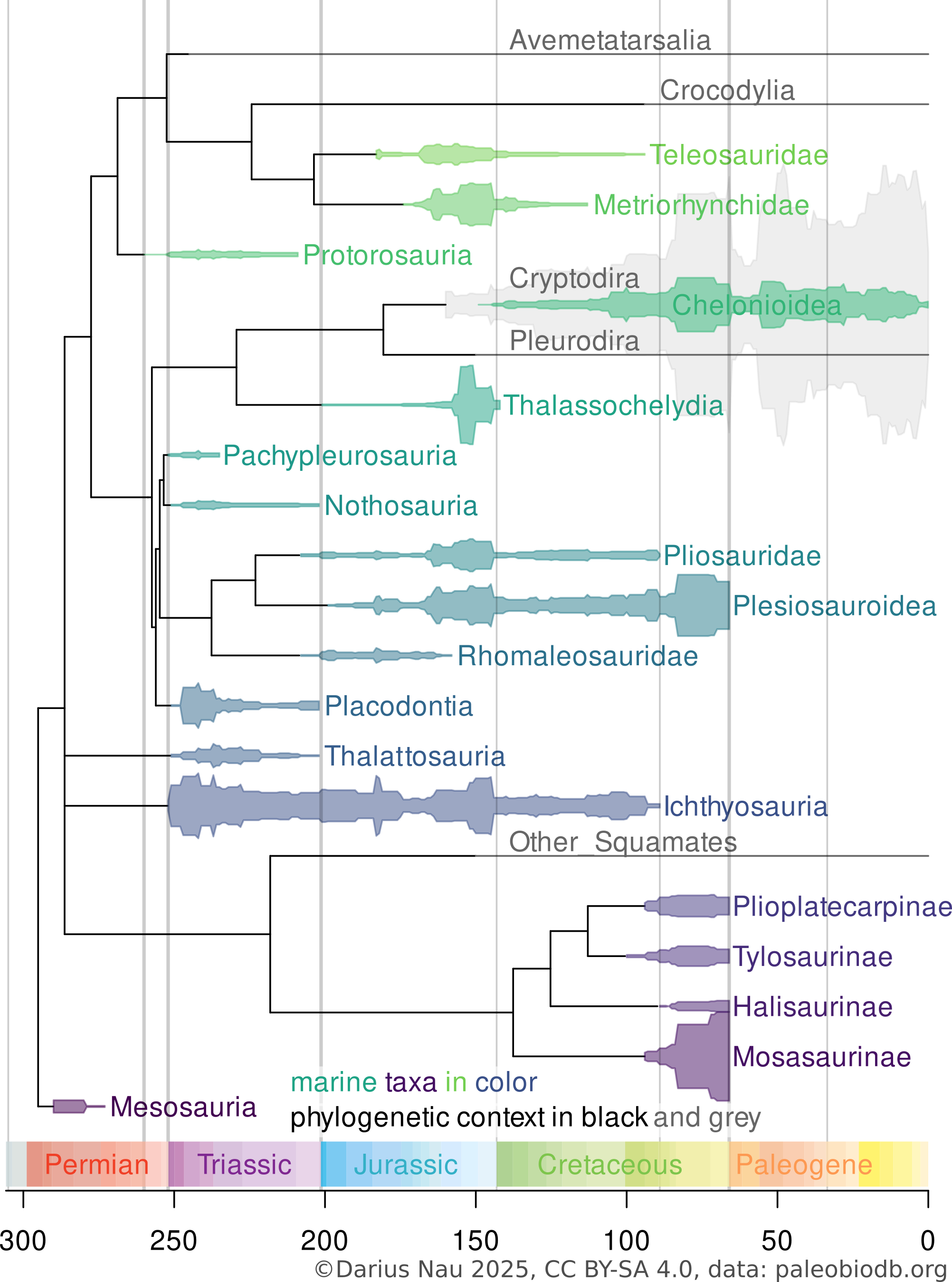
Diversity trends among Permian and Mesozoic marine reptiles
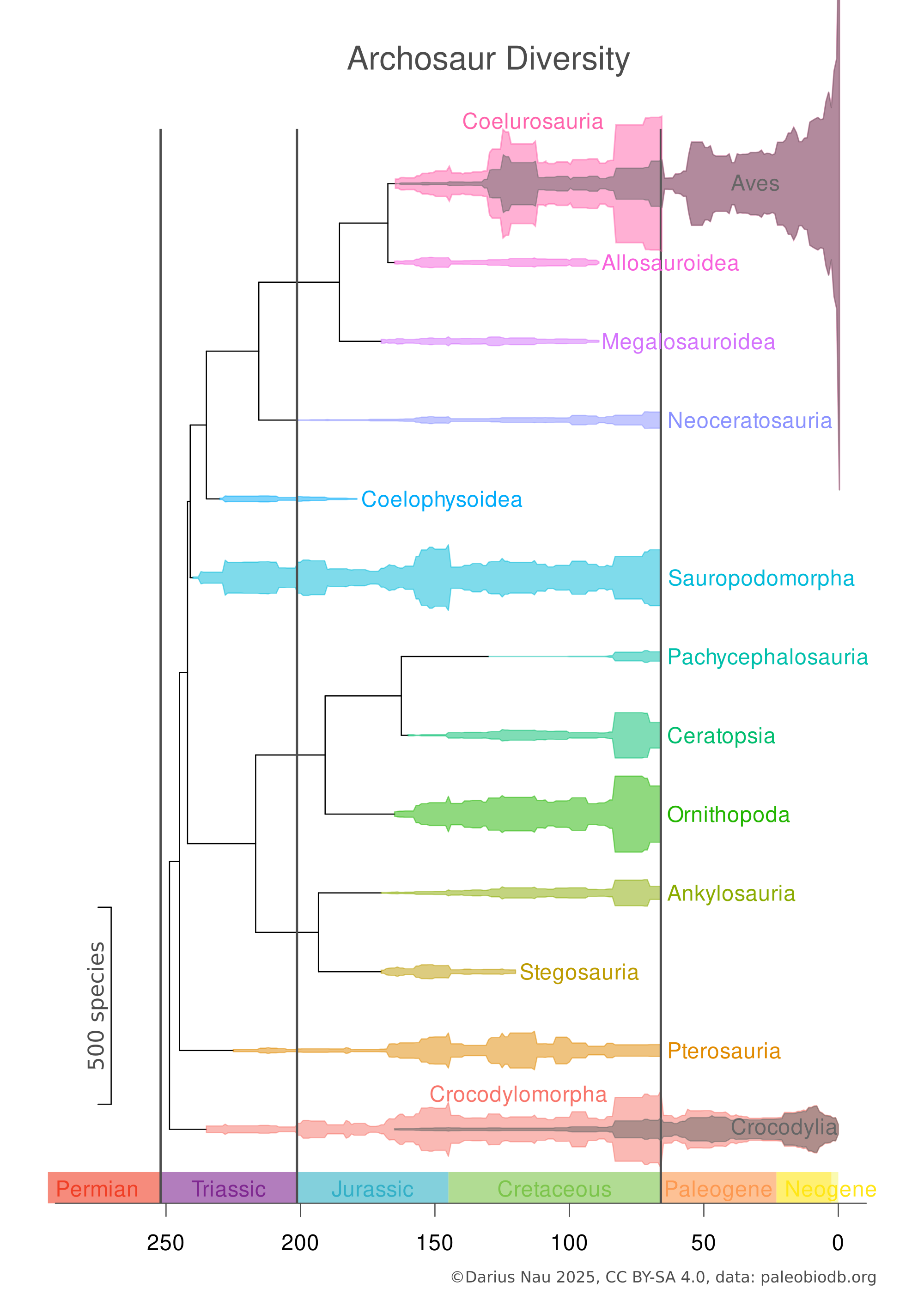
Overview of major mesozoic archosaur groups, with a focus on the diversity of non-avian dinosaurs (traditional/Ornithischia-Saurischia model of phylogenetic relations). Also available as a poster (PDF, A4).
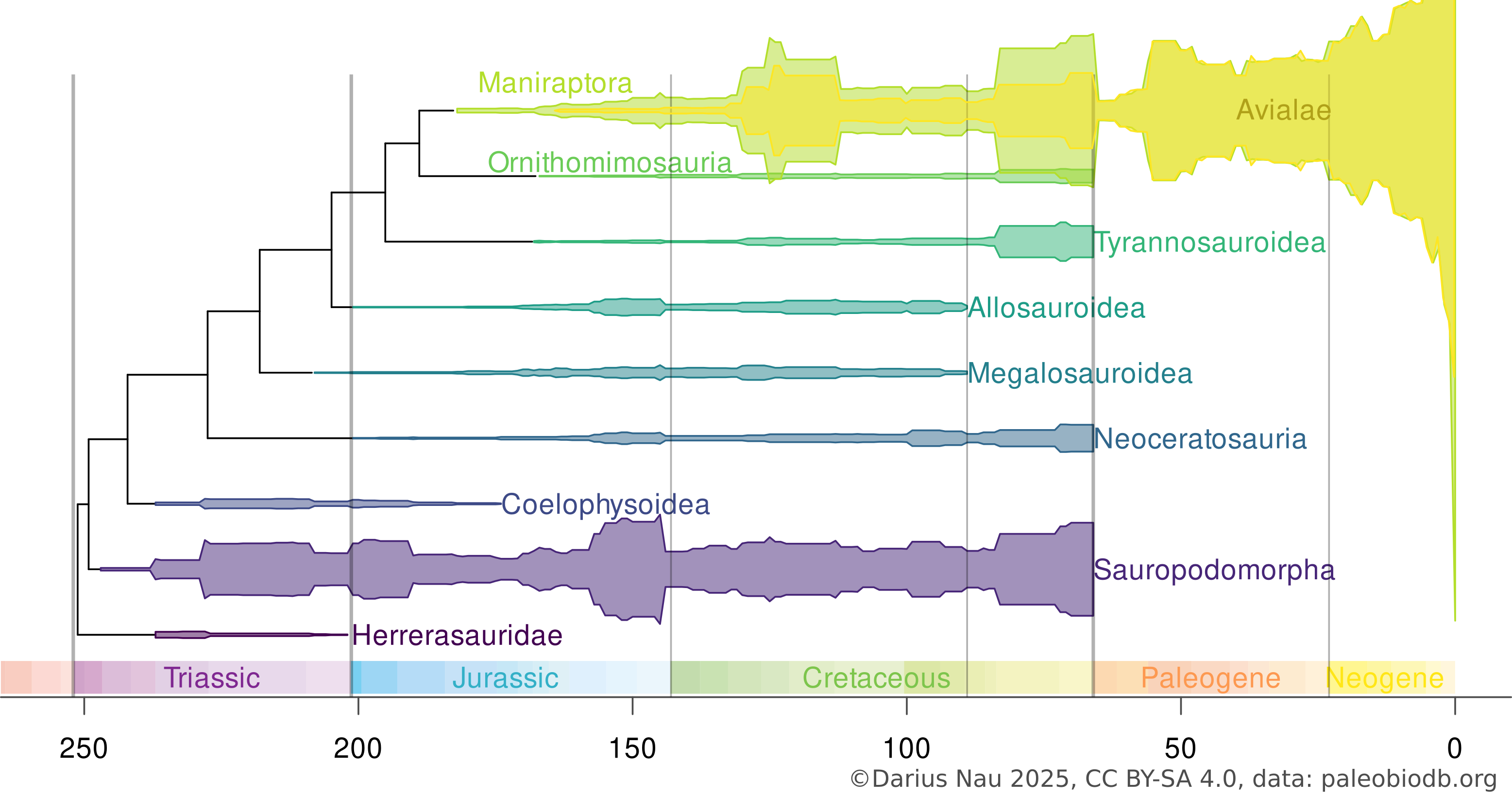
Major groups of saurischian dinosaurs.
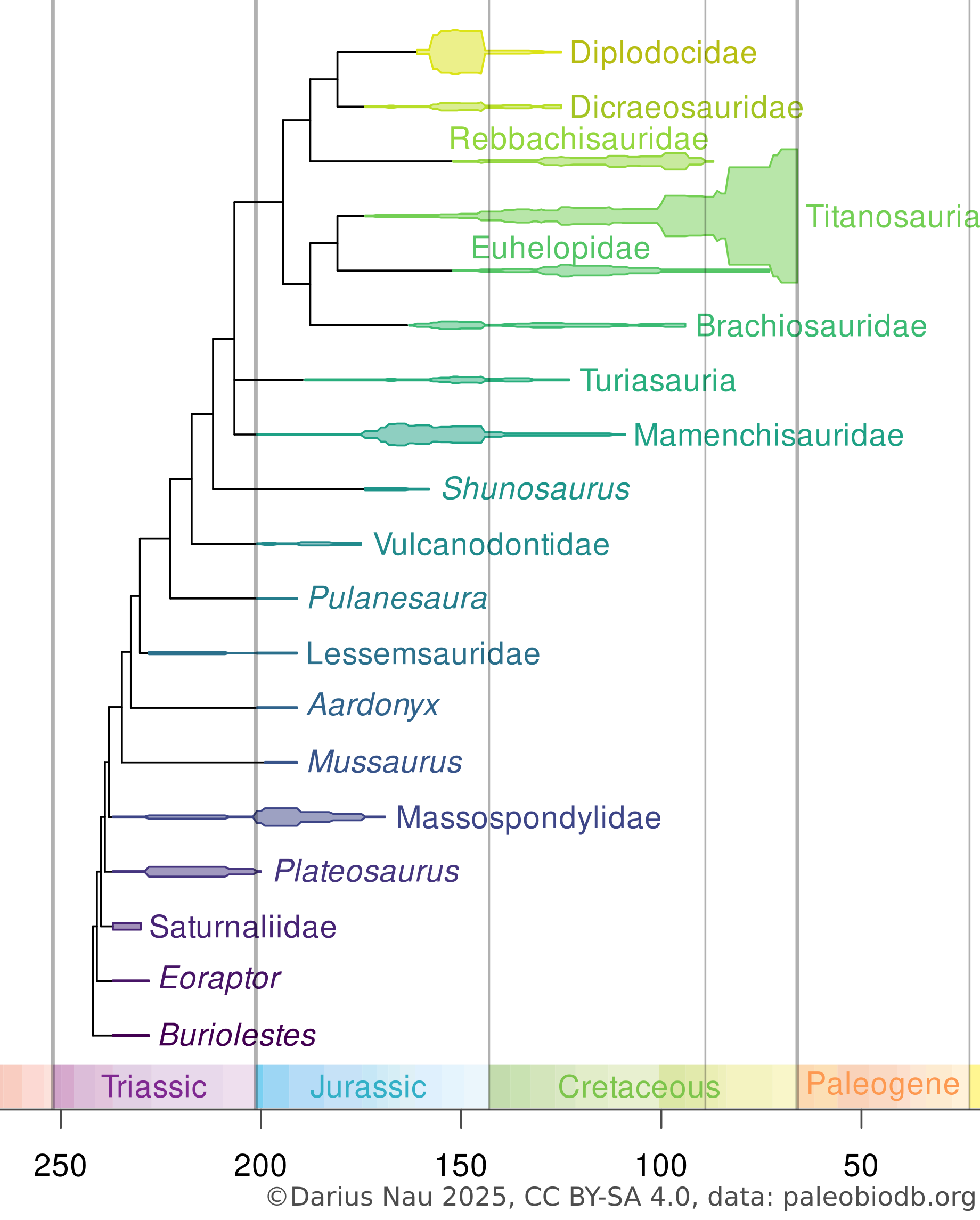
Phylogeny and diversity of sauropodomorph dinosaurs.
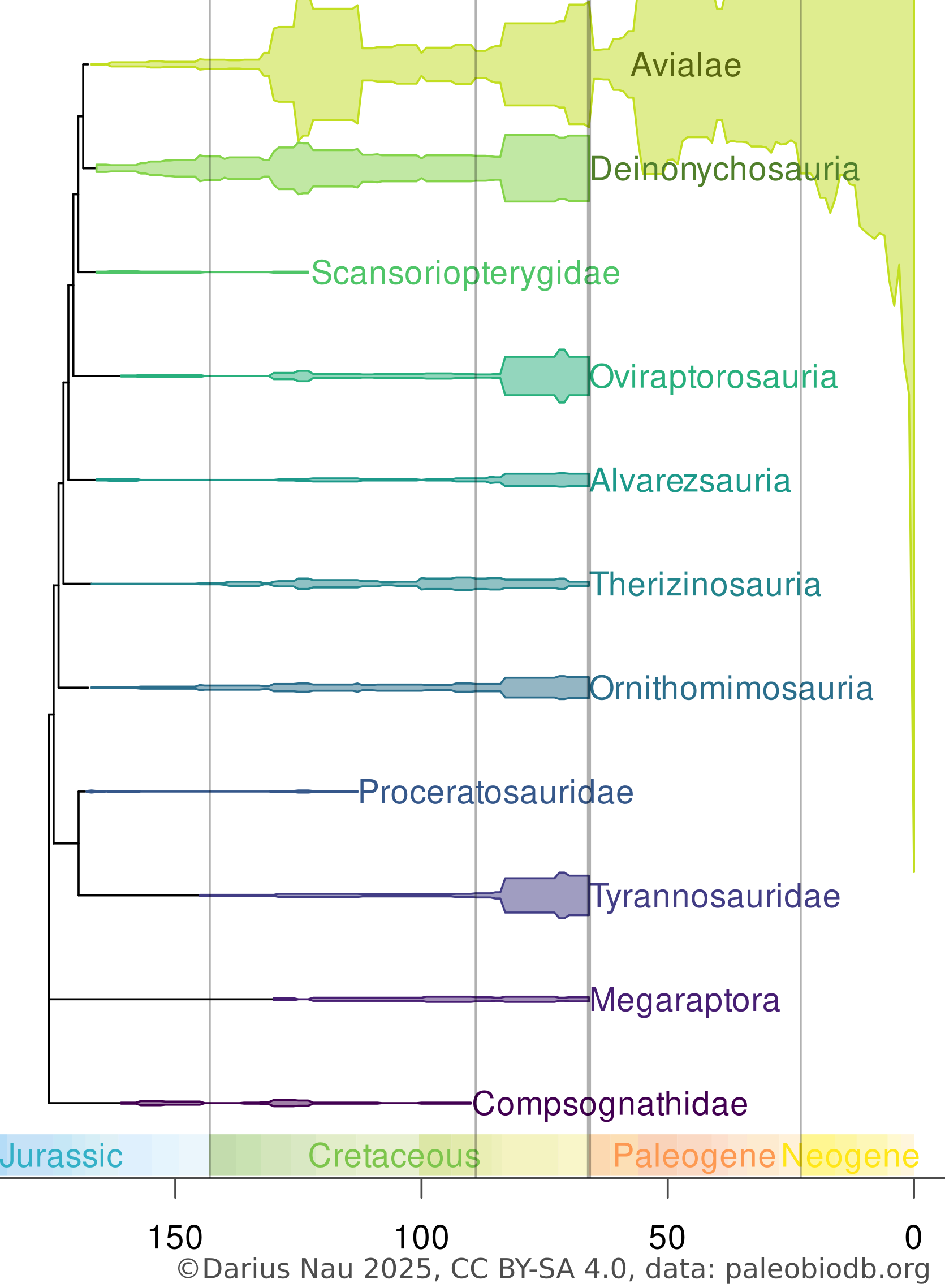
Phylogeny and diversity of coelurosaurian theropods.
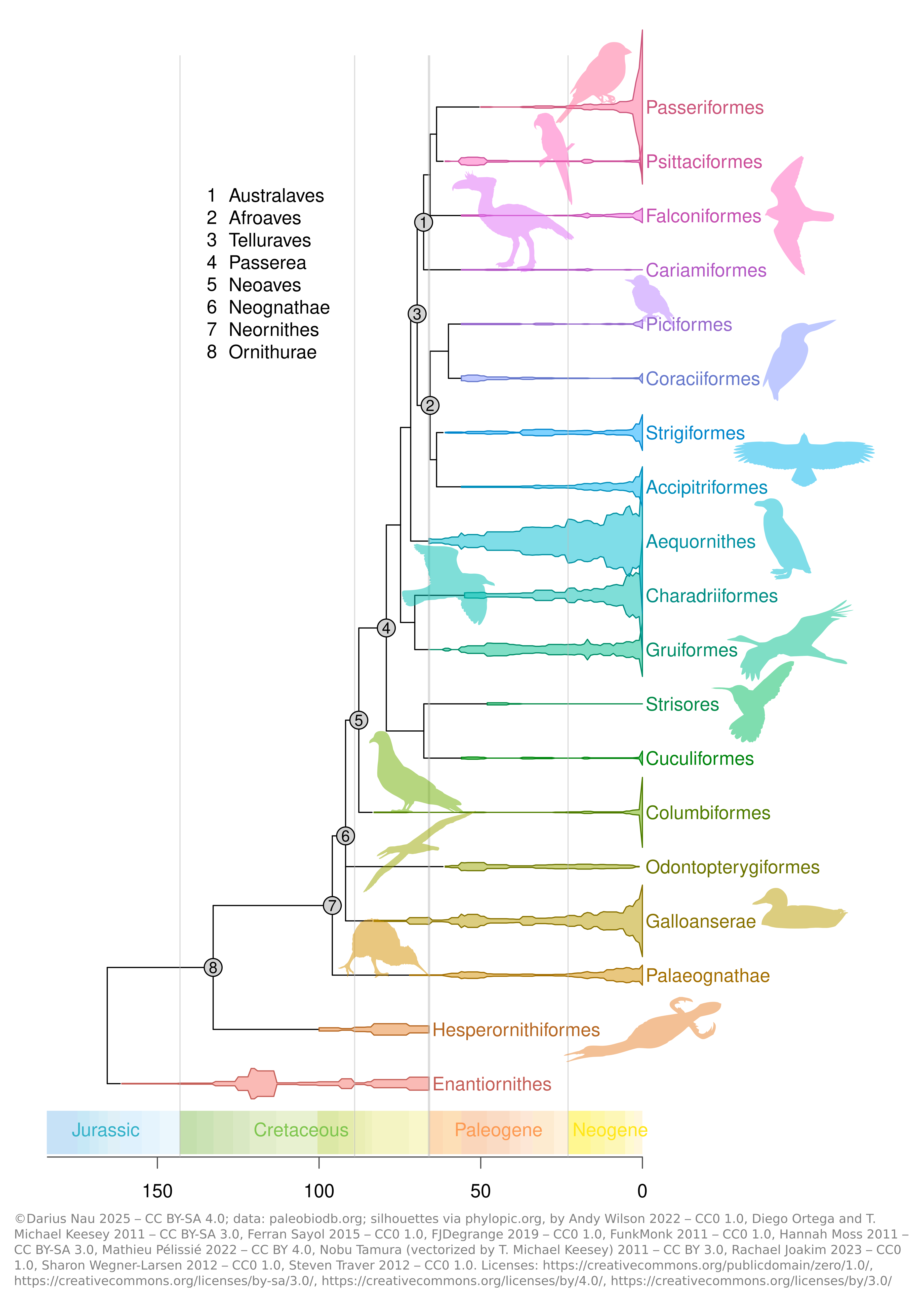
Phylogeny and diversity of ornithurine birds, including phylopic silhouettes (attribution: see chart). Also available as a poster (PDF, A4).
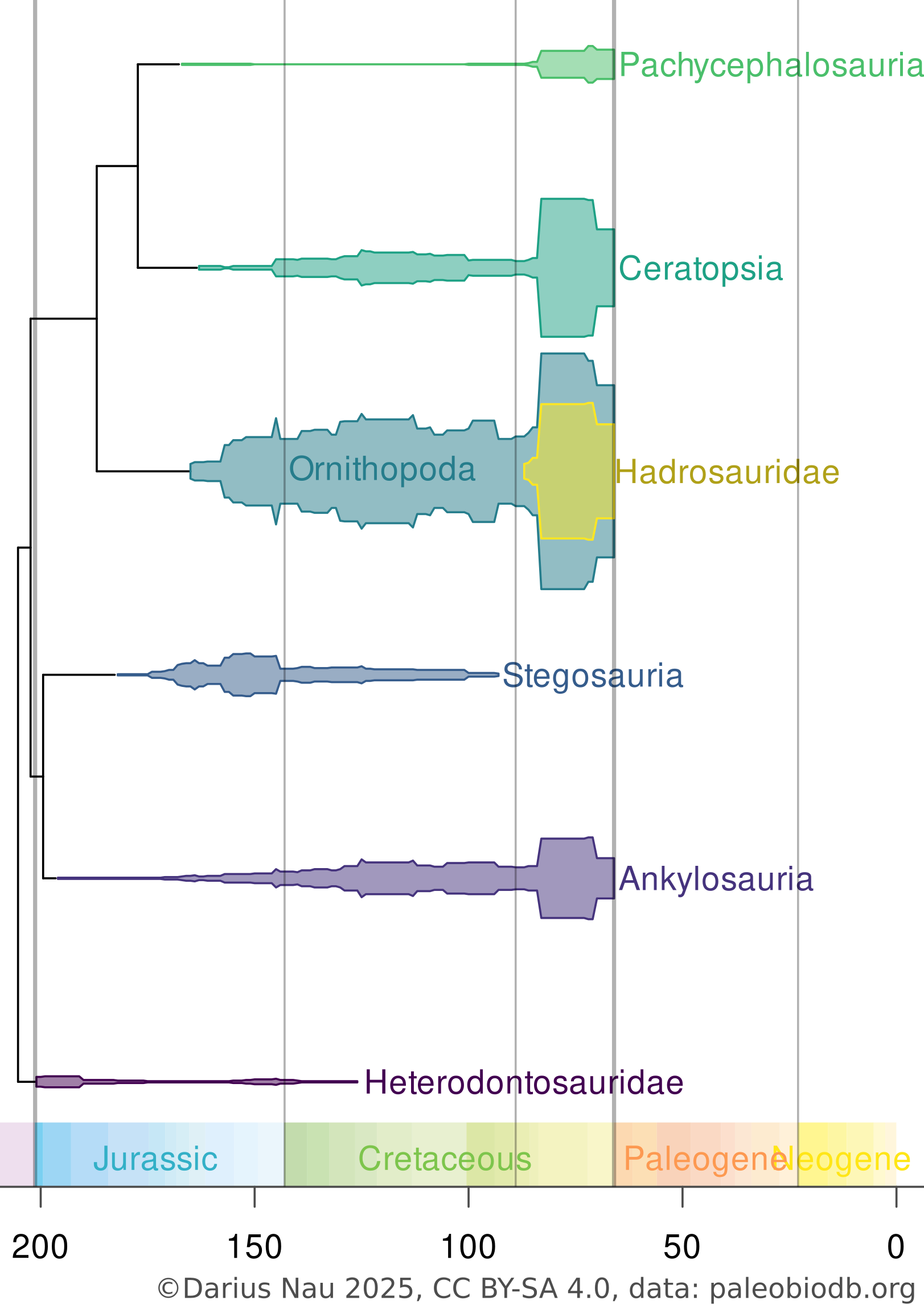
Major monophyletic groups of ornithischian dinosaurs.
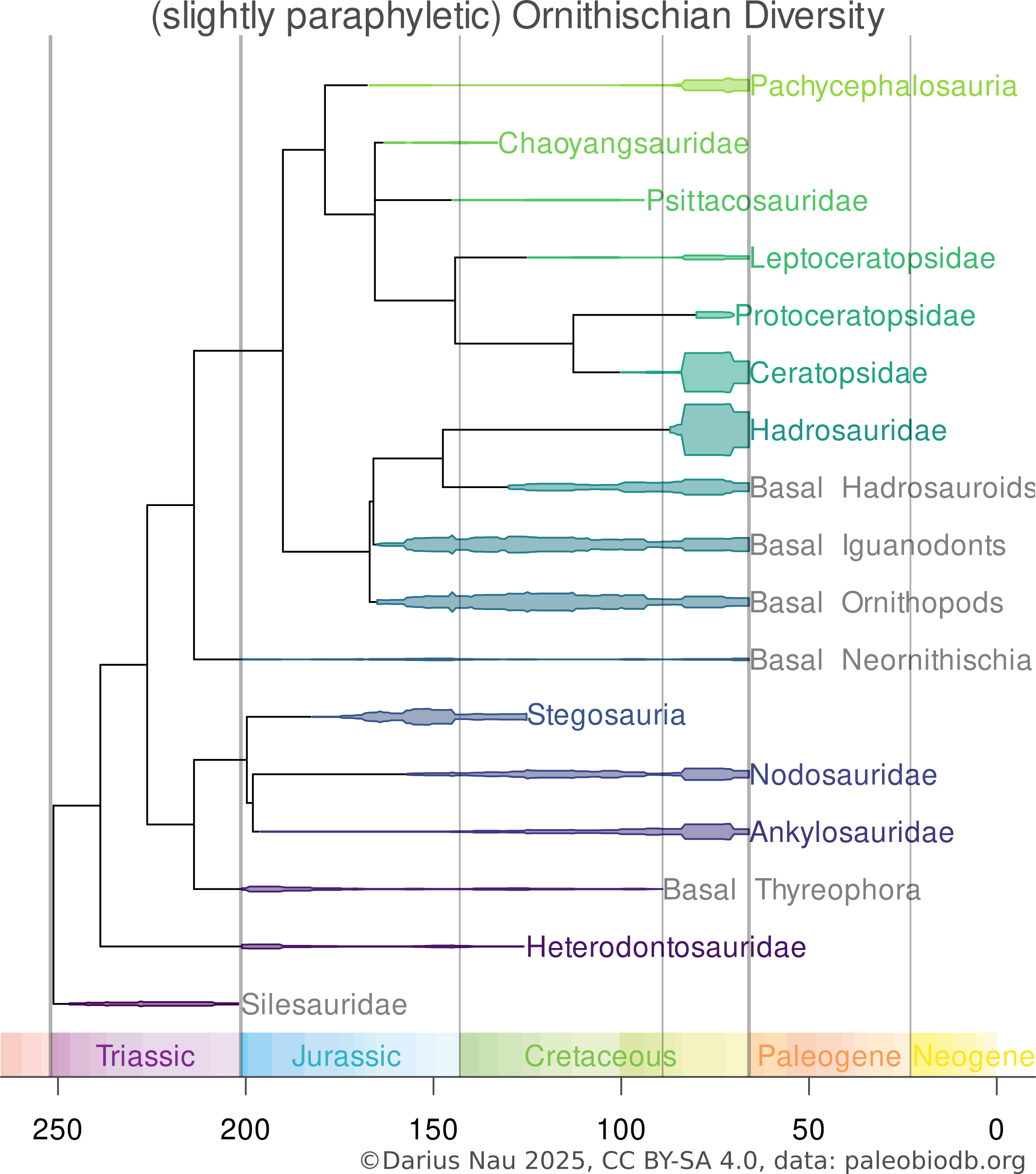
More detailed phylogeny of ornithischia representing some traditional paraphyletic groupings (e.g. basal ornithopods="hypsilophodonts", basal iguanodontians="iguanodonts") as spindles for illustrative purposes.
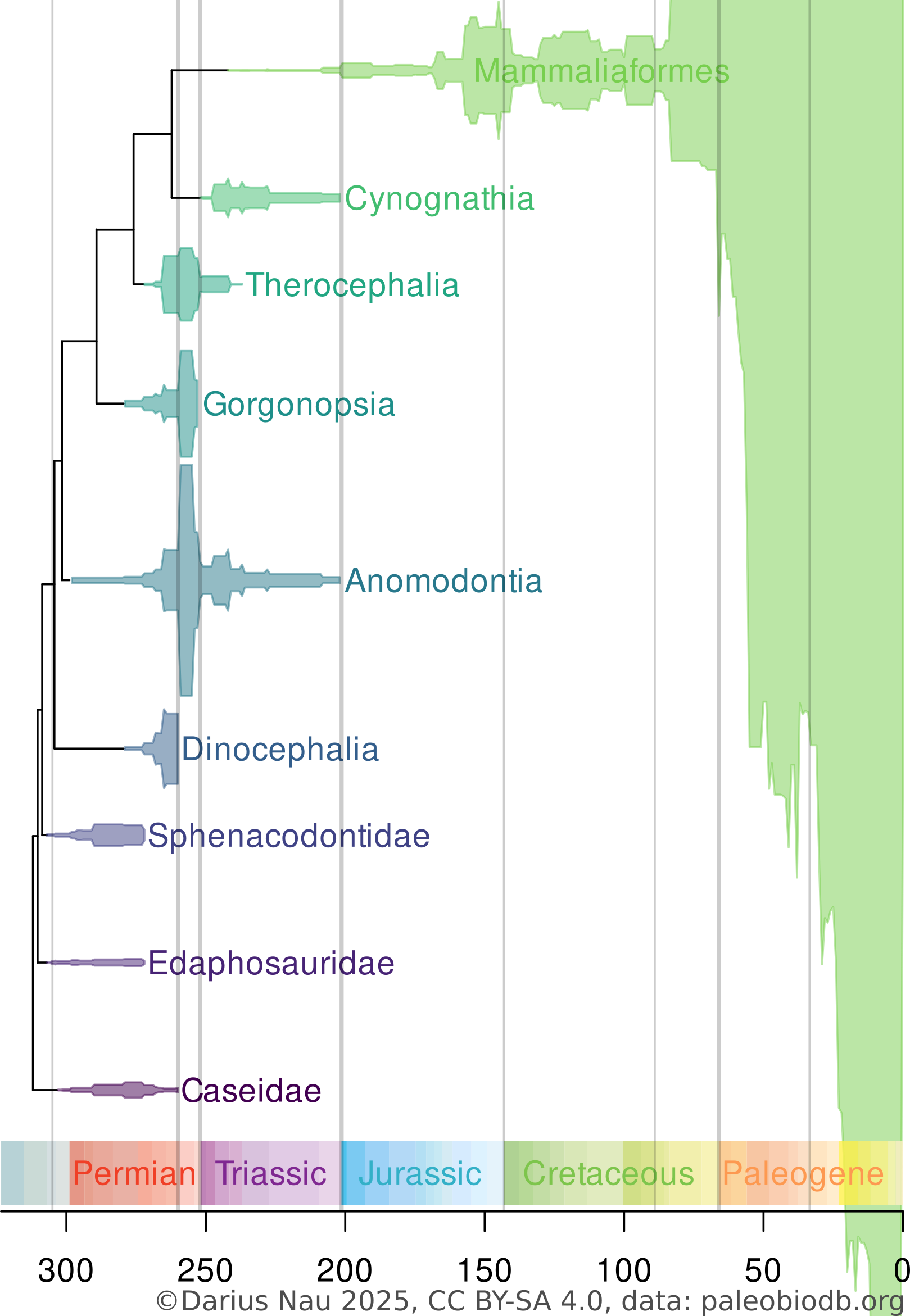
Diversity and phylogeny of basal (non-Mammaliaform) Synapsids of the Carboniferous to Triassic.
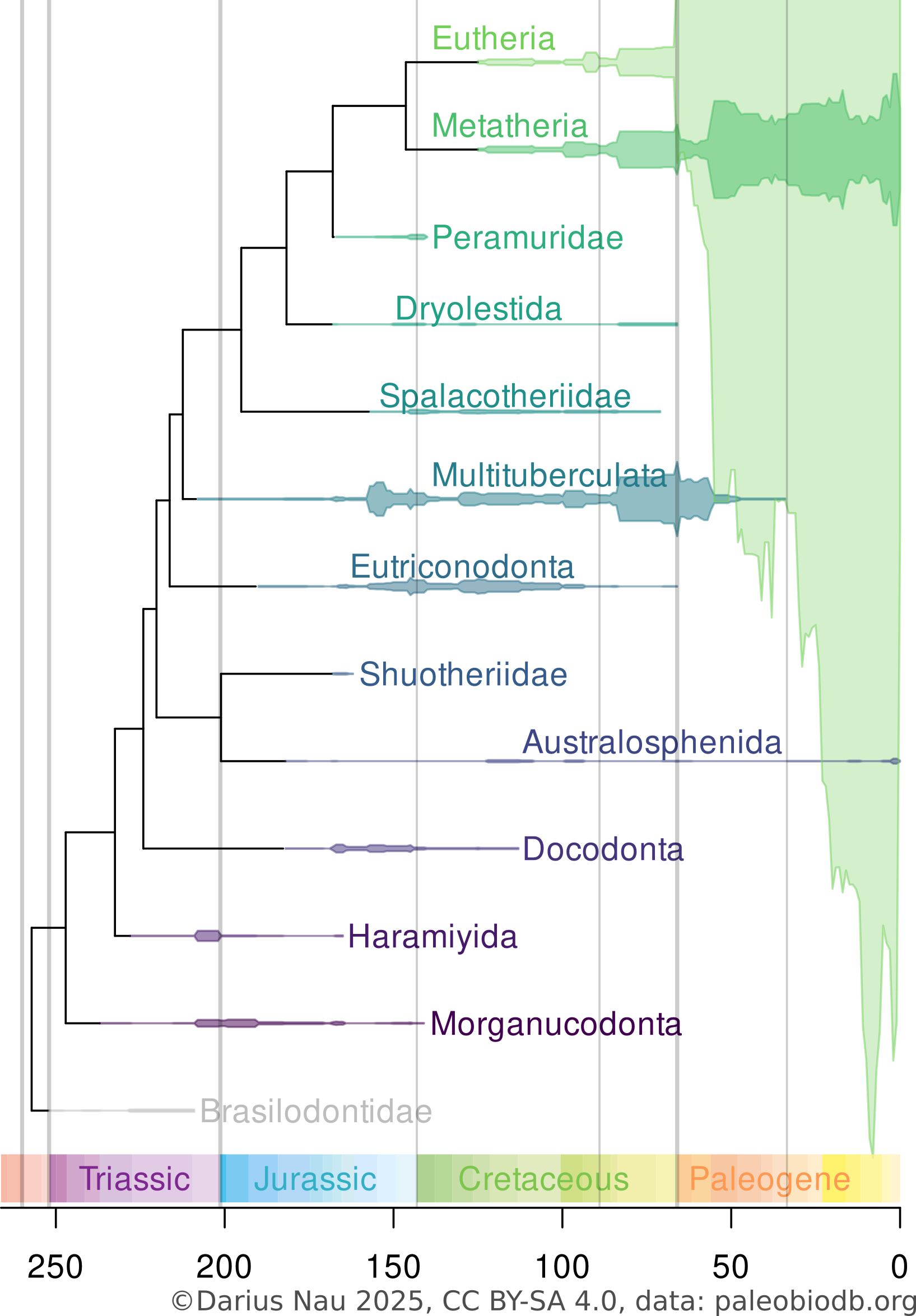
Diversity and phylogeny of mesozoic mammaliaforms, including stem-mammals and stem-therians.
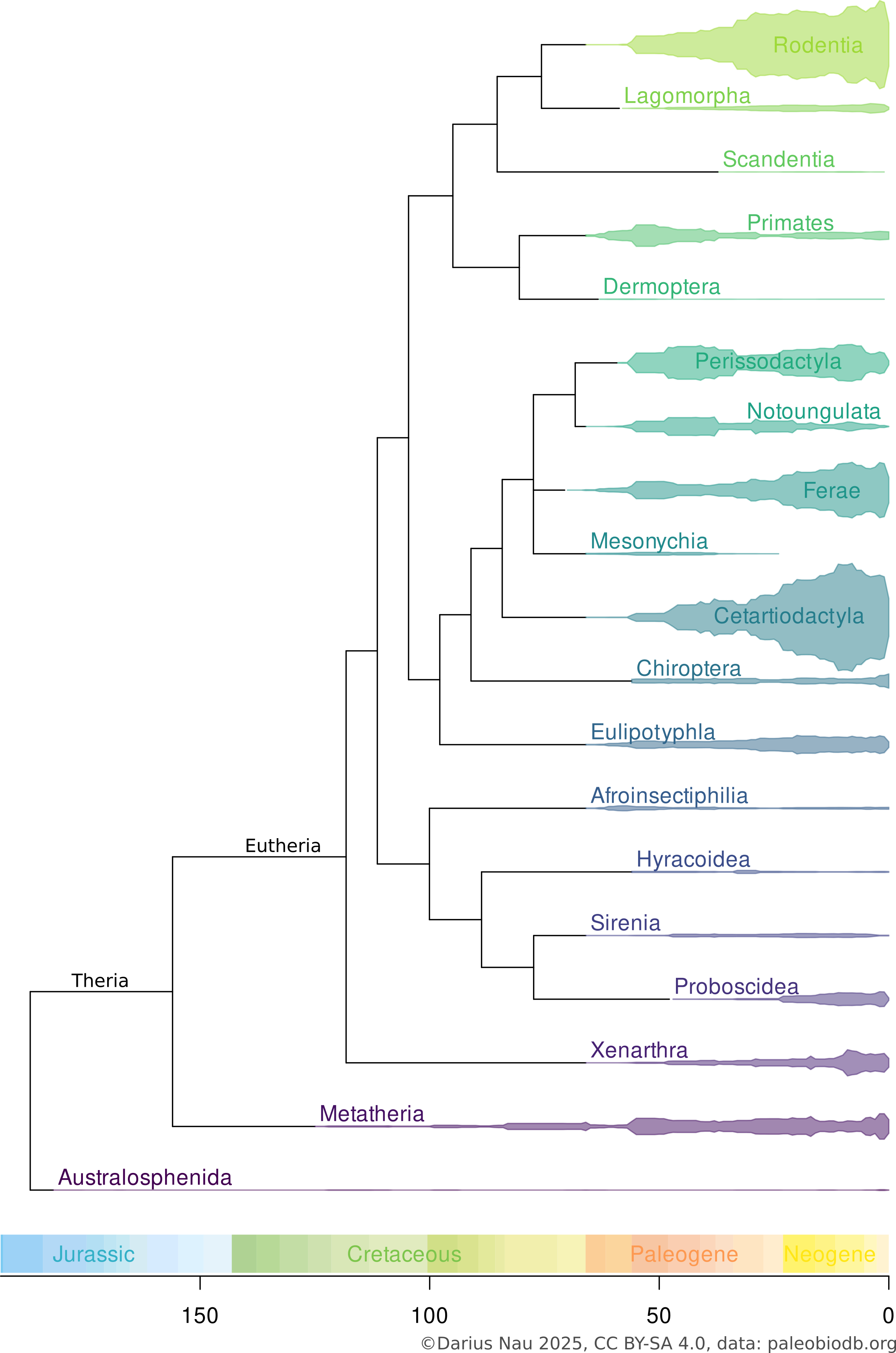
Diversity and phylogeny of crown-group mammals. Also available as a poster (PDF, A4).
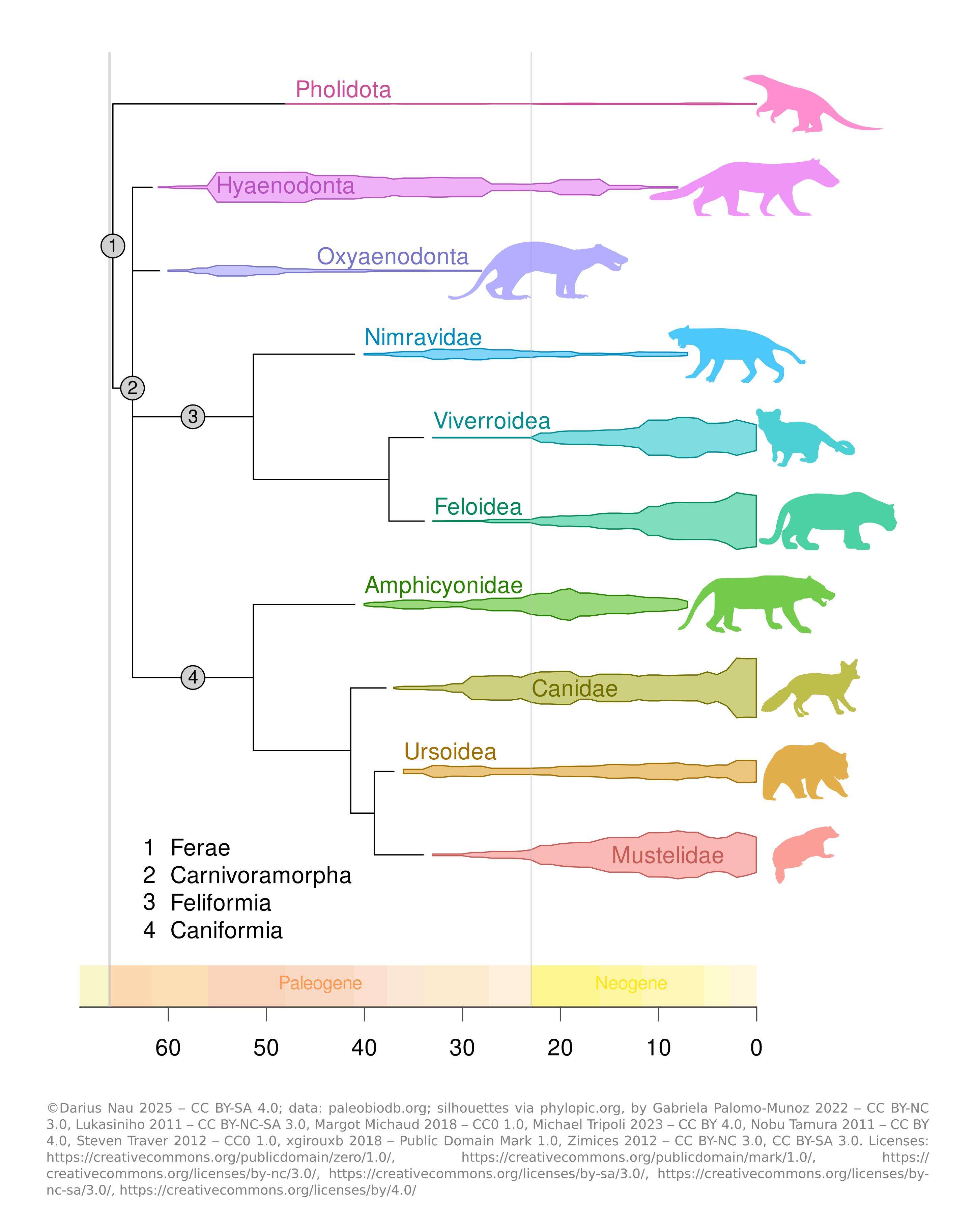
Diversity and phylogeny of Ferae: carnivorans and allies, including the extinct order of "creodonts". Also available as a printable version (PDF, A4 page width).